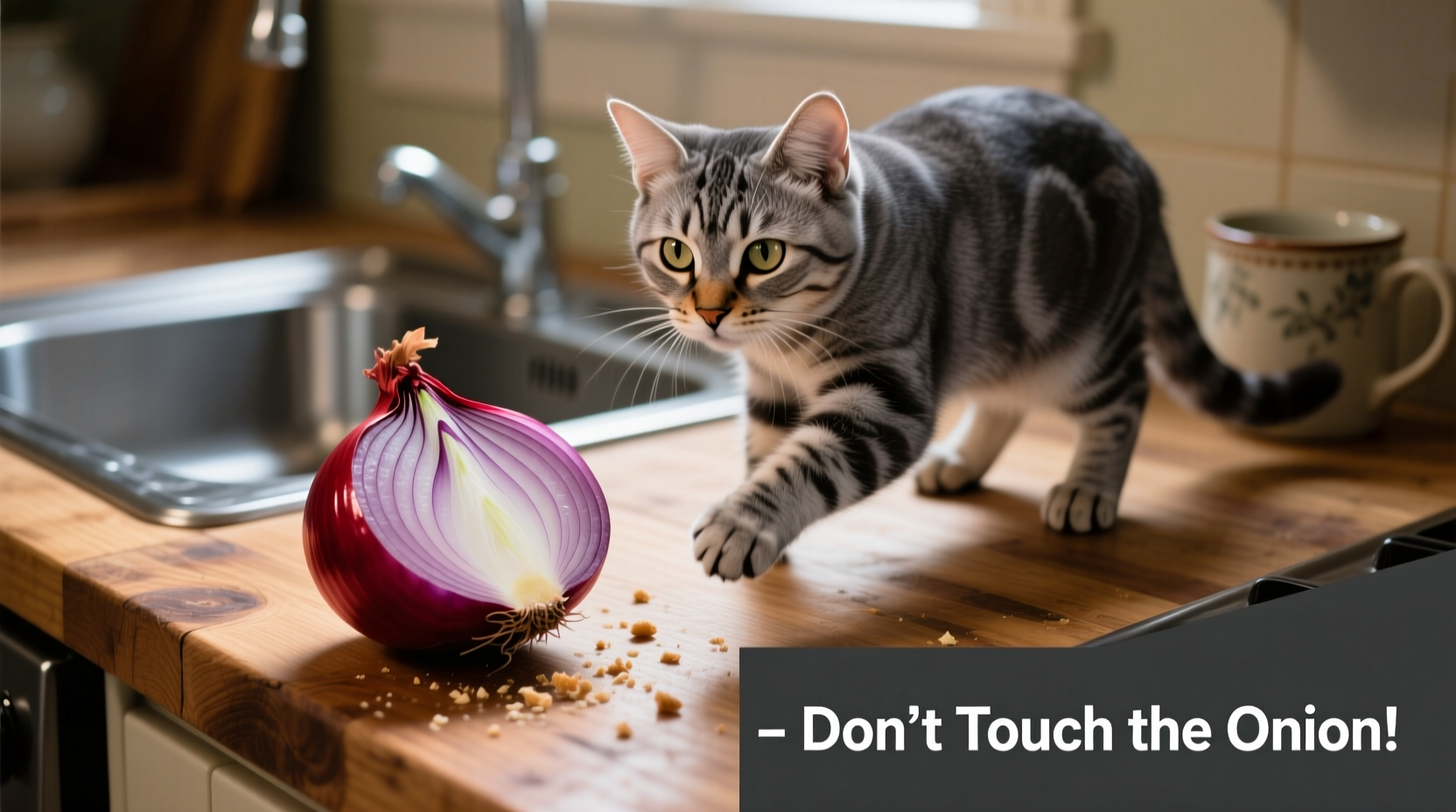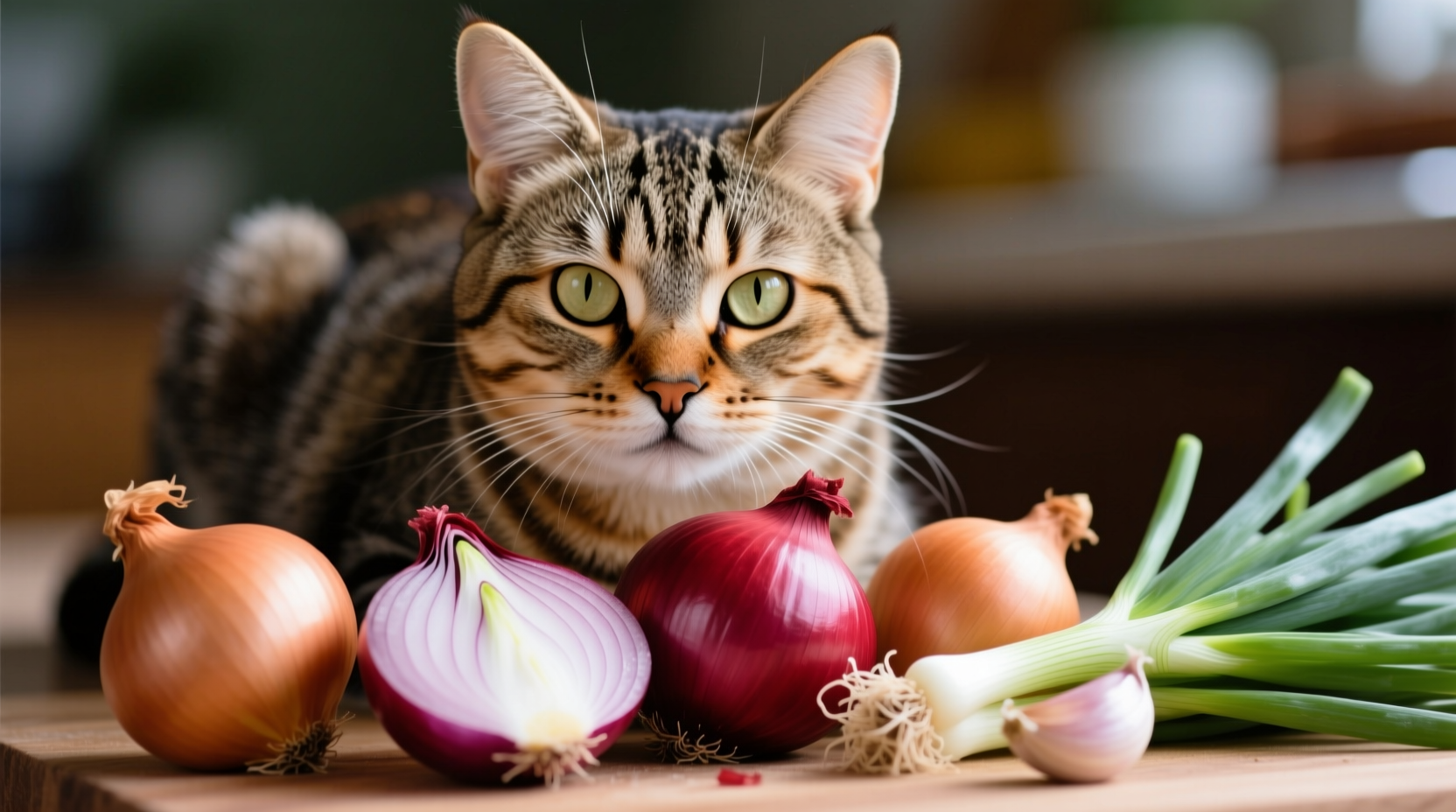As a pet owner, discovering your curious feline has nibbled kitchen scraps can trigger immediate panic. When that snack contains onions, the stakes are critically high. This guide provides vet-verified information about onion toxicity in cats, helping you recognize dangers, respond effectively, and prevent future incidents.
Why Onions Are Deadly for Cats: The Science Explained
Onions contain N-propyl disulfide, an organic compound that oxidizes hemoglobin in red blood cells. This creates Heinz bodies—abnormal structures that make red blood cells fragile and prone to rupture. Unlike humans, cats lack sufficient enzymes to process these compounds, causing progressive oxygen deprivation as their red blood cell count plummets.
"Cats are particularly vulnerable because their red blood cells contain more unsaturated fatty acids than humans," explains Dr. Jennifer Coates, DVM, veterinary advisor for PetMD. "This makes them exceptionally susceptible to oxidative damage from onion compounds."
| Food Type | Toxic Threshold for Cats | Common Sources |
|---|---|---|
| Raw onions | 5g per kg of body weight | Salads, salsas, garnishes |
| Cooked onions | Same toxicity as raw | Gravies, soups, casseroles |
| Onion powder | 5-10x more concentrated | Seasoning blends, processed foods |
| Garlic | 5x more toxic than onions | Garlic bread, sauces, supplements |
This comparative data from the ASPCA Animal Poison Control Center demonstrates why even small exposures matter. A single teaspoon of onion powder contains the equivalent toxicity of an entire medium onion.
Symptom Timeline: What to Watch For
Onion poisoning symptoms typically follow this progression:
- 0-24 hours: Vomiting, diarrhea, decreased appetite
- 24-72 hours: Pale gums, rapid breathing, lethargy
- 3-5 days: Dark urine (hemoglobinuria), jaundice, collapse
"The delayed symptom onset is particularly dangerous," warns Dr. Coates. "Owners often don't connect the illness to onion exposure that happened days earlier."

Immediate Action Plan: Your Cat Ate Onion
If your cat consumed onion, follow these vet-recommended steps:
- Document the exposure: Note the time, estimated amount, and form (raw, cooked, powder)
- Do NOT induce vomiting without veterinary instruction—this can cause additional complications
- Contact animal poison control immediately: ASPCA (888-426-4435) or Pet Poison Helpline (855-764-7661)
- Bring a sample of the ingested material to your vet appointment
Veterinary treatment typically involves intravenous fluids, oxygen therapy, and in severe cases, blood transfusions. Early intervention significantly improves recovery chances—studies show 95% survival rate with treatment within 12 hours versus 60% after 48 hours.
Preventing Onion Exposure: Kitchen Safety Checklist
Protect your cat with these practical measures:
- Store onions and garlic in closed cabinets (not on countertops)
- Dispose of food scraps immediately in secured outdoor bins
- Avoid sharing human food—73% of onion poisoning cases occur from table scraps
- Read pet food labels carefully for onion/garlic derivatives
- Train family members about toxic foods using visual reminders
Remember that all members of the Allium family are dangerous: onions, garlic, leeks, chives, and shallots. Even foods cooked in onion-containing broths transfer toxicity. The Cornell Feline Health Center reports that onion powder in commercial baby food caused multiple poisoning cases when used as a dietary supplement.
Safe Flavor Alternatives for Cats
Instead of onion-containing foods, try these vet-approved options:
- Catnip or valerian root for aromatic stimulation
- Freeze-dried chicken or fish treats
- Plain cooked pumpkin (1 teaspoon)
- Commercial cat grass for digestive health
Always introduce new foods gradually and in small quantities. Consult your veterinarian before making dietary changes, especially for cats with pre-existing conditions.











 浙公网安备
33010002000092号
浙公网安备
33010002000092号 浙B2-20120091-4
浙B2-20120091-4